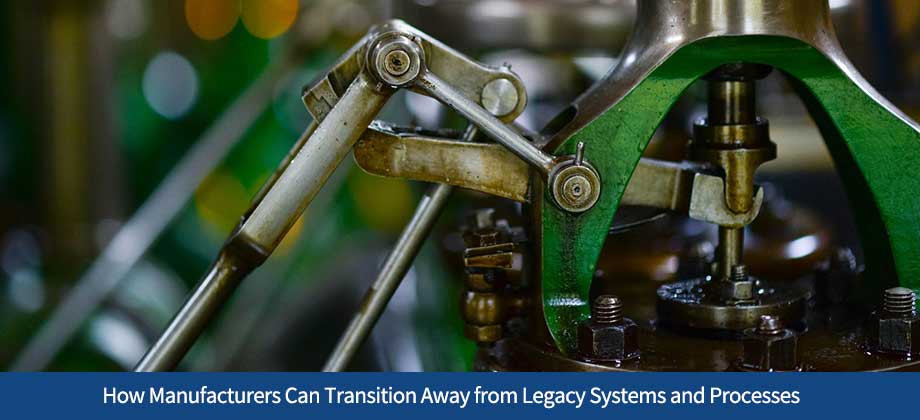How Manufacturers Can Transition Away from Legacy Systems and Processes

The manufacturing industry is constantly evolving with new machinery, technologies, and software solutions being introduced every year. However, the challenge for many manufacturers is how to transition away from their legacy systems and processes. It can be a daunting task to make such a big change, but it’s necessary for companies to stay competitive in the market. In this blog post, we’ll explore how manufacturers can transition away from legacy systems and processes to modernize their operations and increase efficiency.
1. Assess Your Current Situation: To start with, a company needs to evaluate its current situation in terms of existing systems and processes. This includes identifying areas for improvement and assessing the systems that are currently in place. Manufacturers need to recognize their current bottlenecks and pinpoint how legacy systems and processes are holding back the company’s operations. Without this assessment, the changes made would be inefficient and not result in the desired outcome.
2. Get Your Employees’ Buy-In: One of the most significant challenges of transitioning away from legacy systems and processes is getting employees to accept the change. Employees often get comfortable with the tools and processes that they’ve been using for years and may have some resistance to the changes. Communication is key to help employees understand why change needed and how these new systems and processes are going to benefit them. Manufacturers can consult with workers for their ideas and feedback about how the new methods could be incorporated into the current system, and how to make the transition as smooth as possible.
3. Plan Your Transition Carefully: Once you’ve assessed the current situation and have gotten the employees involved, it’s time to develop a plan for transitioning. Manufacturers should map out the transition process to avoid any downtime that could hurt their operations. The plan should incorporate incorporating a contingency plan that addresses all possible alternatives, managing change, project management, training, and communication. The aim is to make it clear to all stakeholders, the processes, and the timeline for the transition. This will reduce any uncertainty in the manufacturing process.
4. Invest in New Technology: Legacy systems and processes hinder productivity and efficiency and can affect the company’s bottom line. The introduction of new manufacturing technology and systems will have an enormous impact on the manufacturing process, from the quality of goods produced and faster acquisition of customer insights, to smoother operation and overall cost reduction. While most of these capabilities come with a cost, they reduce the production time and support the company’s growth trajectory.
5. Transition with Support: Even with a well-structured plan and an understanding workforce, transitioning to new systems and processes may take time and require technical support. Examples of such support include software transitioning and bug fixing, server management, and other training requirements. Working with a technology partner that specializes in the manufacturing industry can help provide smooth transitioning into the new systems and provide ongoing support post-implementation.
Manufacturers are continually challenged to better their operations to stay competitive. Transitioning away from legacy systems and processes is one of the primary strategies to increase productivity and general efficiency. The process is not always an easy one, but with thorough assessment, consultation with employees and technology partner, effective preparation, and financial investment, it is possible to make the transition successfully. It is a journey that manufacturing executives should feel positive about embracing, as it may pave the way for more productivity, competitive advantage, and greater ROI.
Your privacy is important to us. ARF Financial will never sell or rent your information to any third party. Click here for more information about our privacy policy.

